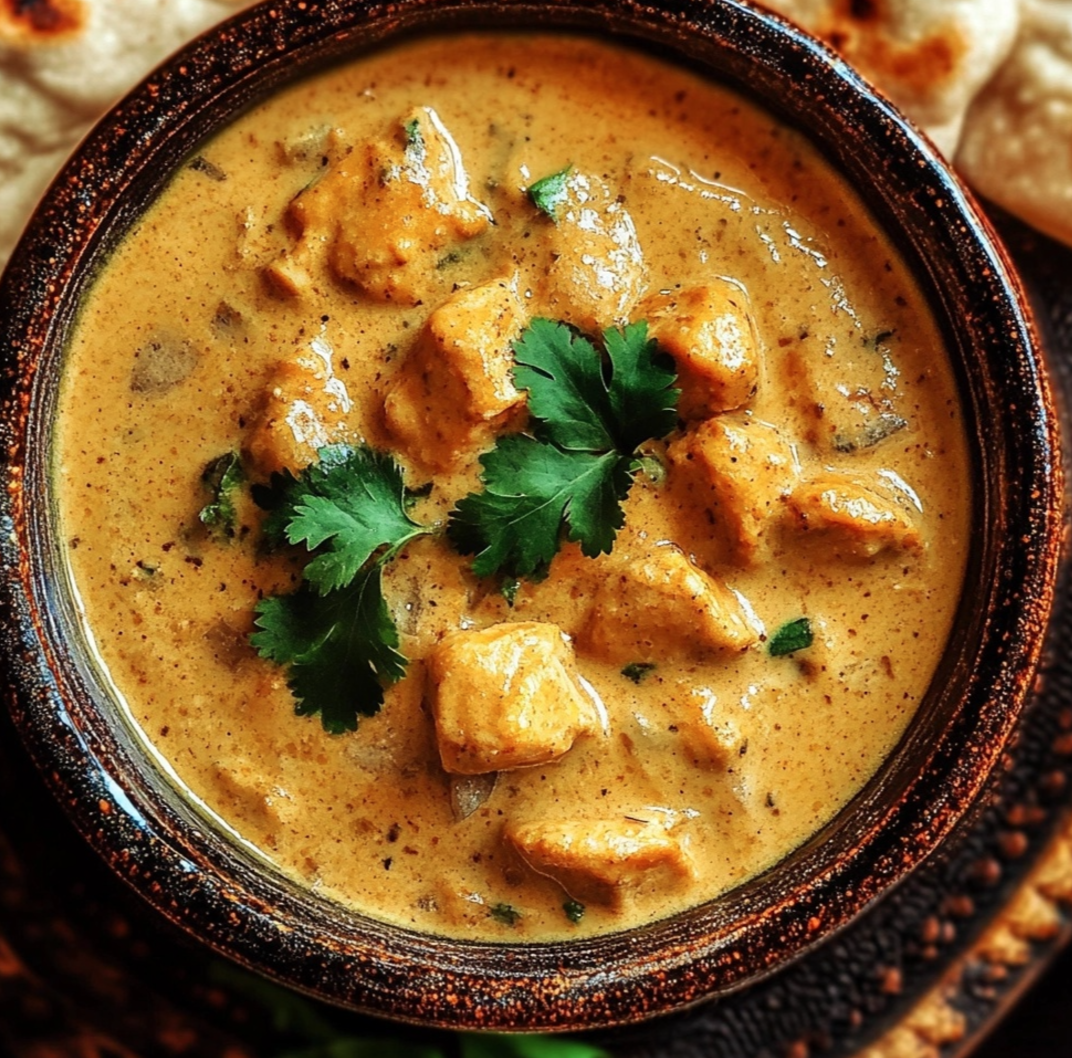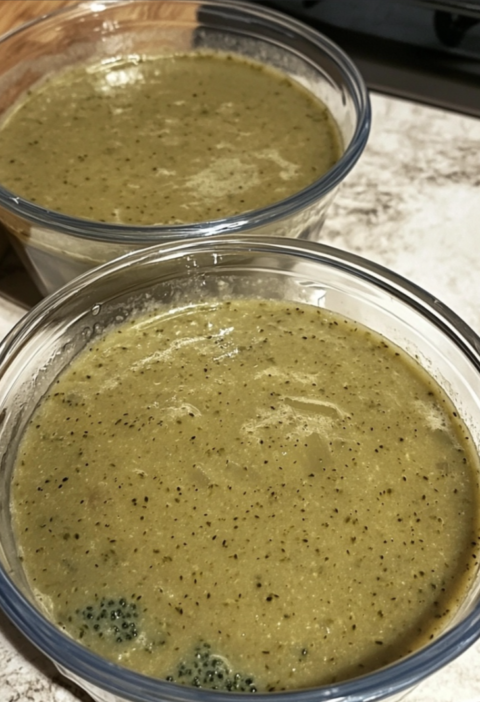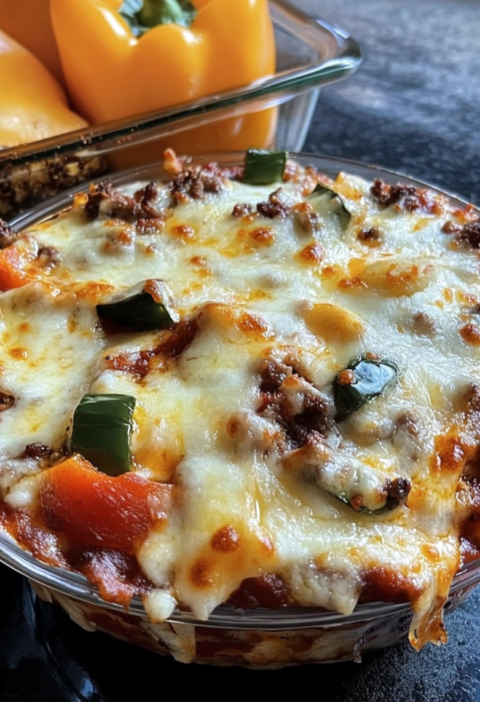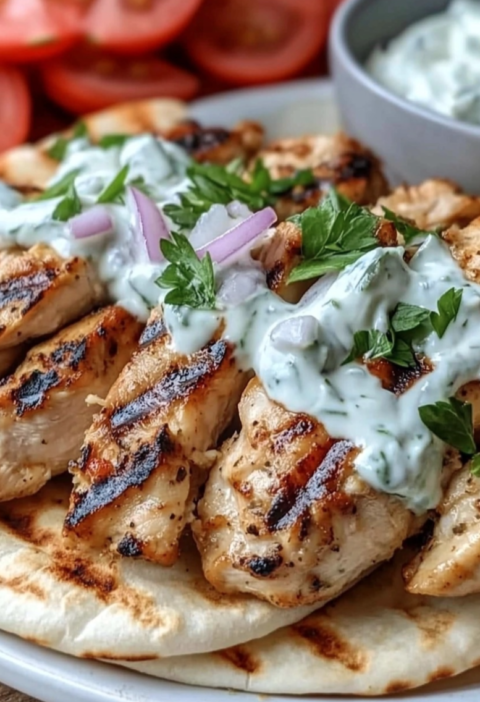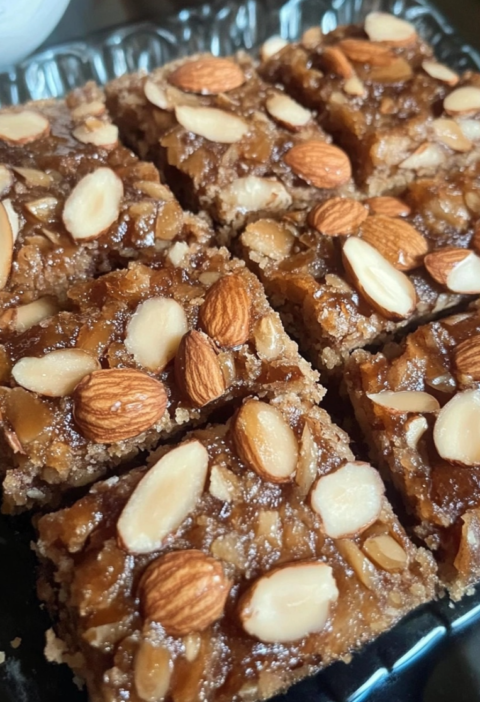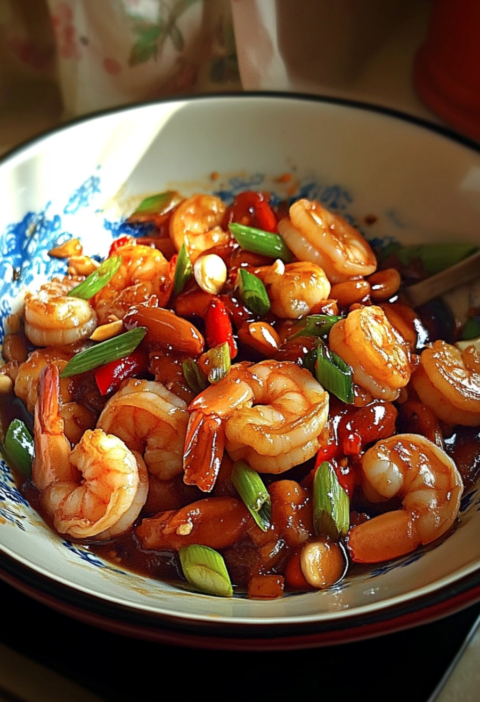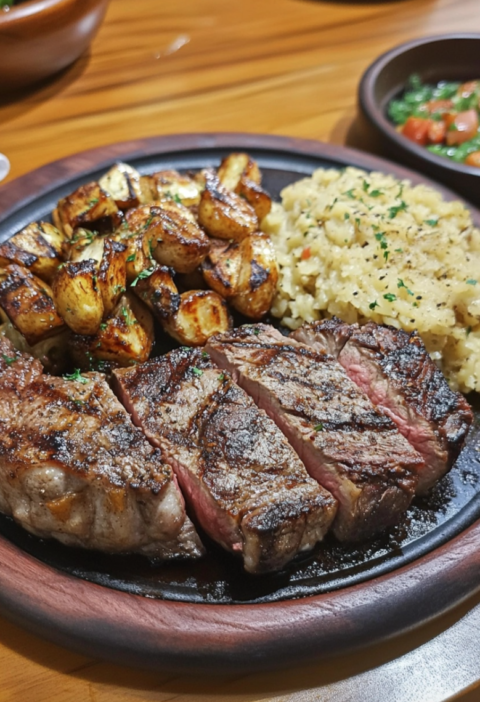Imagine a dish that takes you to India’s heart, where the smell of spices and creamy curry delight you. Welcome to chicken korma, a dish loved worldwide. But what makes it so special?
Exploring chicken korma’s history and cultural importance, we find its unique flavors and cooking techniques. Join us as we discover this Indian cuisine treasure. We’ll look at its origins and the key ingredients that make it perfect.
Key Takeaways
- Chicken korma is a beloved dish in authentic Indian cuisine, known for its creamy texture and aromatic spices.
- The dish has its roots in the Mughlai cuisine, reflecting the cultural influences of the Mughal empire.
- Korma is celebrated for its mild yet flavorful profile, making it a versatile and appealing option for a wide range of palates.
- Mastering the balance of ingredients, such as the cashew and yogurt base, is crucial for achieving the signature creamy consistency of korma.
- Proper marination and the selection of high-quality spices are essential for unlocking the depth of flavors in this dish.
Introduction to Traditional Chicken Korma
Chicken korma is a dish loved by many, especially in India. It comes from the Mughal Empire’s royal kitchens. There, cooking art and cultural mix created a unique taste experience.
Origins of Mughlai Cuisine
The Mughal dynasty ruled India from the 16th to the 19th century. They left a lasting mark on Indian food. They mixed Persian, Central Asian, and Indian flavors, making Mughlai cuisine.
The Cultural Significance of Korma
Chicken korma shows the Mughlai cooking style. It’s creamy and has a light spice taste. It’s loved by many, not just in royal kitchens.
Korma’s fame has spread worldwide. It’s enjoyed by food lovers everywhere. This dish shows India’s rich culture and the power of food to bring people together.
“Chicken korma is a harmonious blend of creamy indulgence and the vibrant spices that define Indian culinary traditions.”
Essential Ingredients for the Perfect Korma
Making a delicious chicken korma starts with the right ingredients. At its core is a creamy, yogurt-based sauce that adds a smooth texture. Cashew nuts ground finely make it even creamier. A mix of aromatic spices takes the taste to another level.
These key ingredients make korma special. They turn tender meat into a dish that’s a true delight. Knowing how each ingredient works helps us make the perfect korma every time.
- Creamy Yogurt Base: The base of korma is a smooth, yogurt-based sauce. Full-fat yogurt adds a tangy taste and a rich texture.
- Cashew Nuts for Richness: Ground cashew nuts make korma creamy. They add a nutty taste and a smooth feel that goes well with other ingredients.
- Aromatic Spice Blend: A mix of aromatic spices like cumin, coriander, cardamom, and cinnamon gives the dish a deep flavor.
| Ingredient | Role in Korma | Quantity |
|---|---|---|
| Yogurt | Provides a creamy, tangy base | 1 cup |
| Cashew Nuts | Lends richness and creaminess | 1/2 cup |
| Aromatic Spices | Elevate the flavor profile | 2 tablespoons |
| Chicken | The star of the dish | 1 pound |
By mixing these ingredients just right, we can make a chicken korma that’s both creamy and full of flavor. Each part works together to make a dish that’s perfect.
Korma: creamy, chicken, Indian, mild
Korma is a favorite in Indian cuisine, known for its creamy and mild taste. We’ll explore what makes it special, including its flavor, regional differences, and how it stands out from other curries.
Understanding Korma’s Flavor Profile
Korma is famous for its balanced spices, offering a mild and creamy taste. Unlike spicy Indian curries, korma is gentle and smooth. It combines aromatic spices like coriander and cumin with a creamy base, making it comforting and appealing.
Regional Variations Across India
Korma stays true to its essence in India, but each region adds its own twist. In the North, korma has a richer, dairy-based sauce. The South prefers a lighter, coconut-based version. Spice levels also vary, with some places using more cloves and cinnamon, while others prefer a milder flavor.
What Makes Korma Uniquely Mild
Korma’s mildness comes from its spice balance and dairy ingredients. Unlike spicy curries, korma uses fewer chili peppers. Yogurt, cream, or coconut milk add creaminess, making it warm but not hot.
Korma is a treat for both seasoned and new fans of Indian cuisine. Its mild flavors and creamy texture promise a delightful culinary adventure.
| Flavor Profile | Regional Variations | Unique Mildness |
|---|---|---|
| Harmonious balance of aromatic spices, creamy and smooth texture | North: Heavier, dairy-based sauce; South: Lighter, coconut-infused | Careful spice blend, use of dairy-based ingredients to temper heat |
The Art of Marinating Chicken for Korma
Crafting the perfect tender meat for a delicious chicken korma is an art. It needs careful attention to the marination process. The key is mixing a yogurt marinade with a special spice blend. Let’s explore how to make your chicken korma a true culinary masterpiece.
The marinade is crucial for tender meat. Yogurt’s acidity tenderizes the chicken, making it juicy and tender. Letting the chicken soak in the yogurt for a long time breaks down its proteins. This makes the meat tender and enjoyable to eat.
The spice blend also plays a big role. It can change the flavor of your korma. Spices like garam masala and cumin add unique tastes. They can make your dish stand out.
- Make a marinade with yogurt, garlic, ginger, and your favorite spices.
- Put the chicken in the marinade, making sure it’s fully covered.
- Chill the chicken in the marinade for at least 2 hours, or up to 24 hours. This lets the flavors mix and the meat tenderize.
- Take the chicken out of the marinade and throw away any leftover liquid. Then, start cooking.
Learning how to marinate is key to making tender meat. It adds the richness of yogurt marinade and the complexity of a good spice blend. Your chicken korma will be amazing, and your guests will love it.
Mastering the Cashew and Yogurt Base
Making the perfect creamy curry starts with a great yogurt-based base. The core of a true cashew nuts korma is a mix of tangy yogurt and rich nut paste. Here, we’ll share tips for picking the right yogurt and making the nut paste. These steps are key to the dish’s creamy texture and rich flavor.
Proper Yogurt Selection Tips
Choosing the right yogurt is key for the korma’s texture. Go for a full-fat, creamy yogurt that’s smooth and velvety. Stay away from low-fat or Greek yogurts, as they’re too thick and can mess up the flavors. Instead, pick a high-quality, plain yogurt. It will blend well with the other ingredients, making a rich, yogurt-based base.
Preparing the Nut Paste
- Toast the cashew nuts in a dry pan until they smell nice and are lightly golden.
- Let the nuts cool down, then blend them into a smooth paste. This paste adds the korma’s creamy and rich taste.
- If the paste is too thick, add a little water at a time until it’s smooth and pourable.
With the right yogurt and nut paste, you’re ready to make a fantastic creamy curry korma. Paying close attention to these steps will make your dish rich in flavor and smooth in texture. This is what korma lovers are looking for.
Aromatic Spices: The Heart of Korma
The flavors of authentic Indian cuisine shine in Korma, thanks to its aromatic spices. Cardamom and cumin are just a few spices that make Korma so special. They create a taste that is both mild and satisfying.
At the heart of Korma is a blend of spices that balance the heat and creaminess. The main spices include coriander, cumin, cardamom, cloves, and cinnamon. Each one adds a unique flavor to the dish.
- Coriander – Lends a citrusy, floral note that brightens the flavor.
- Cumin – Adds an earthy, slightly nutty undertone.
- Cardamom – Brings a warm, sweet aroma.
- Cloves – Adds a subtle, aromatic bitterness.
- Cinnamon – Offers a delicate sweetness.
The balance of these aromatic spices makes Korma stand out. By adjusting the spice amounts, the dish’s creators highlight its mild flavors. This creates a harmonious and indulgent taste experience.
| Spice | Role in Korma | Flavor Profile |
|---|---|---|
| Coriander | Brightens the overall flavor | Citrusy, floral |
| Cumin | Provides an earthy, nutty undertone | Earthy, slightly nutty |
| Cardamom | Adds warm, slightly sweet aroma | Warm, slightly sweet |
| Cloves | Contributes a subtle, aromatic bitterness | Aromatic, slightly bitter |
| Cinnamon | Offers a delicate sweetness | Delicate, sweet |
Understanding the roles of these aromatic spices helps us appreciate Korma’s depth. It shows how these spices enhance the mild flavors of Korma, making it a remarkable authentic Indian cuisine experience.
“The key to a truly exceptional Korma lies in the harmonious blend of aromatic spices that work in tandem to create its signature mild yet deeply satisfying flavor profile.”
Step-by-Step Cooking Techniques
Making the perfect creamy curry chicken korma at home is a fun journey. Learning the right cooking techniques lets you make it just like restaurants. Let’s look at the key steps to make your korma a true treat.
Temperature Control Methods
Keeping the right temperature is key when making korma. The right heat helps make it creamy and rich. Here’s what we suggest:
- Searing the chicken at a high temperature to lock in the juices
- Simmering the curry at a gentle, even heat to allow the flavors to meld
- Adjusting the heat as needed to prevent the sauce from scorching or becoming too thick
Timing and Consistency Tips
Getting the perfect consistency in your korma takes careful timing and detail. Here are some tips from the pros:
- Let the chicken marinate for at least 30 minutes to tenderize and soak up the spices
- Simmer the curry for 20-25 minutes, stirring occasionally, to get the creamy texture
- Be patient and don’t overcook, as this can make it dry and grainy
By using these cooking techniques, you can make your homemade korma taste like restaurant quality. Enjoy the process and the delicious outcome of your cooking skills.
Restaurant-Style Presentation Secrets
Take your homemade chicken korma to the next level with our expert tips. Start by placing the creamy korma in the center of a warmed dish. Add a sprinkle of fresh cilantro, toasted almonds, and a drizzle of korma sauce around the edges.
This simple touch makes your dish look like it’s from a restaurant. It brings the taste of India right to your kitchen.
Looking for vegetarian options? The korma’s mild flavor goes great with roasted cauliflower or paneer cheese. Add colorful bell peppers, steamed spinach, and toasted cashews to make it pop.
Pair it with fluffy basmati rice and warm naan bread for a complete meal. This way, everyone can enjoy a restaurant-quality dish, no matter their diet.
The key to a great presentation is in the garnishes and how you plate it. By focusing on the korma’s smooth texture and spicy flavors, you turn a simple dish into a stunning centerpiece. It will wow your guests and take them on a journey through India’s vibrant tastes.
FAQ
What is the origin of chicken korma?
Chicken korma comes from the rich traditions of Mughlai cuisine. It was born in the royal kitchens of India. Its creamy texture, aromatic spices, and mild flavors have made it a favorite for centuries.
What are the key ingredients in a traditional chicken korma?
Chicken korma is special because of its creamy yogurt sauce, cashew nuts, and aromatic spices. These ingredients combine to give the dish its mild yet complex taste.
How does the marination process affect the tenderness of the chicken in korma?
Marinating the chicken is key to keeping it tender and flavorful. We use yogurt and spices to tenderize the meat. This way, it absorbs the aromatic flavors that are typical of Indian cuisine.
What makes korma uniquely mild compared to other Indian curries?
Korma’s mild taste comes from its spice balance. We choose and blend spices carefully. This creates a creamy, comforting flavor that suits many tastes.
Can vegetarians enjoy chicken korma?
Yes! Vegetarians can enjoy korma too. We offer vegetarian versions that use plant-based proteins. They keep the creamy texture and mild spices that make korma so loved.
